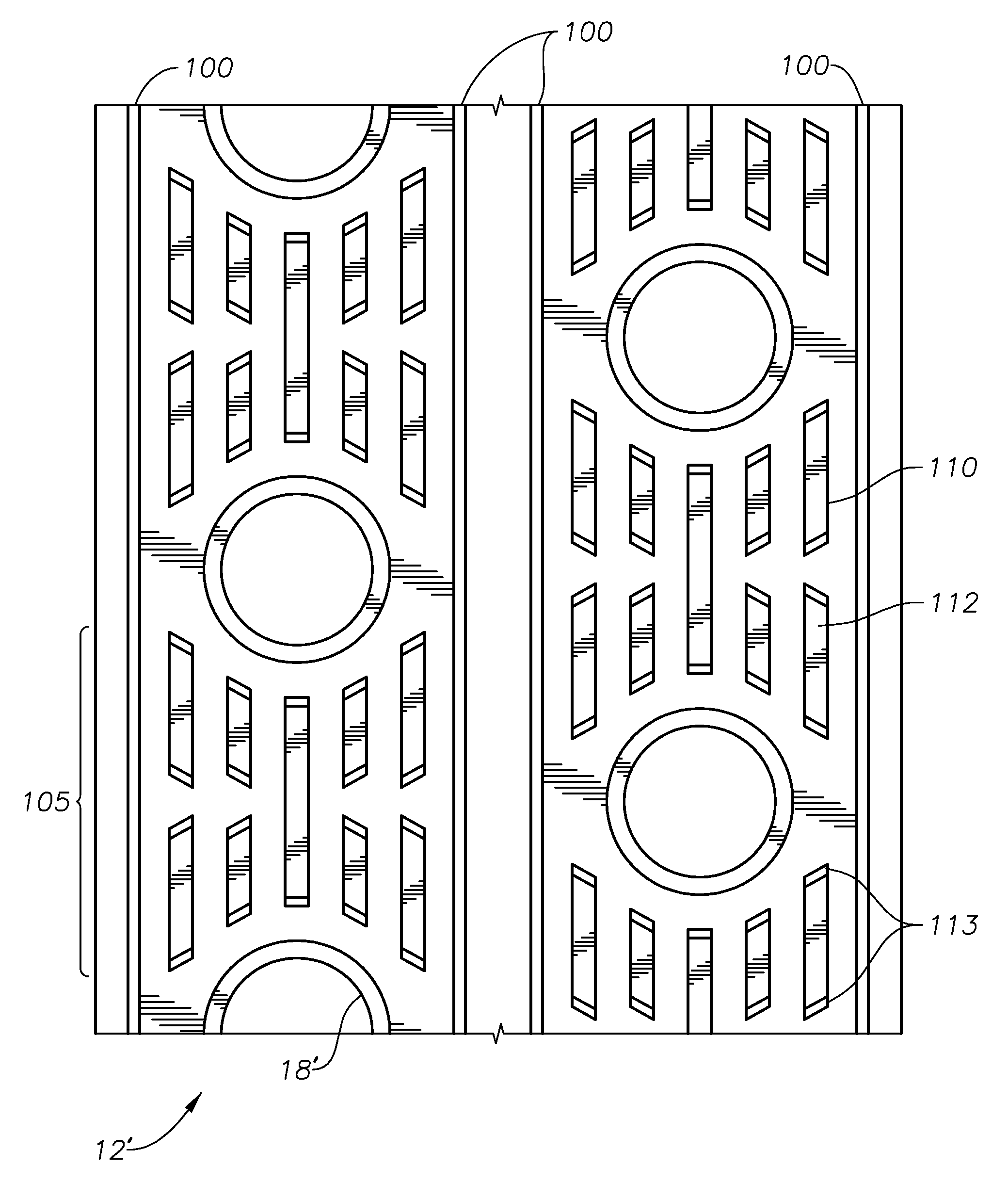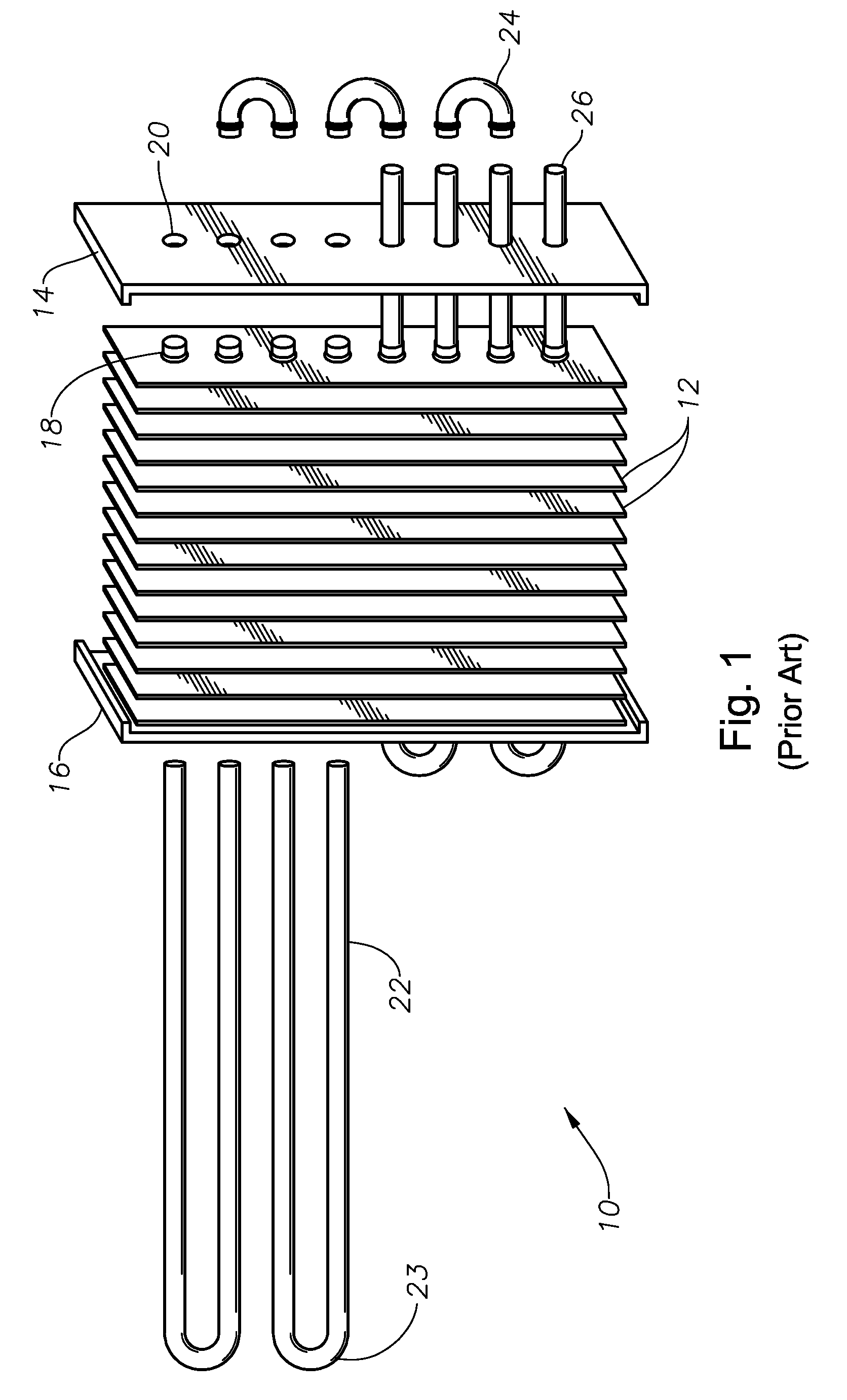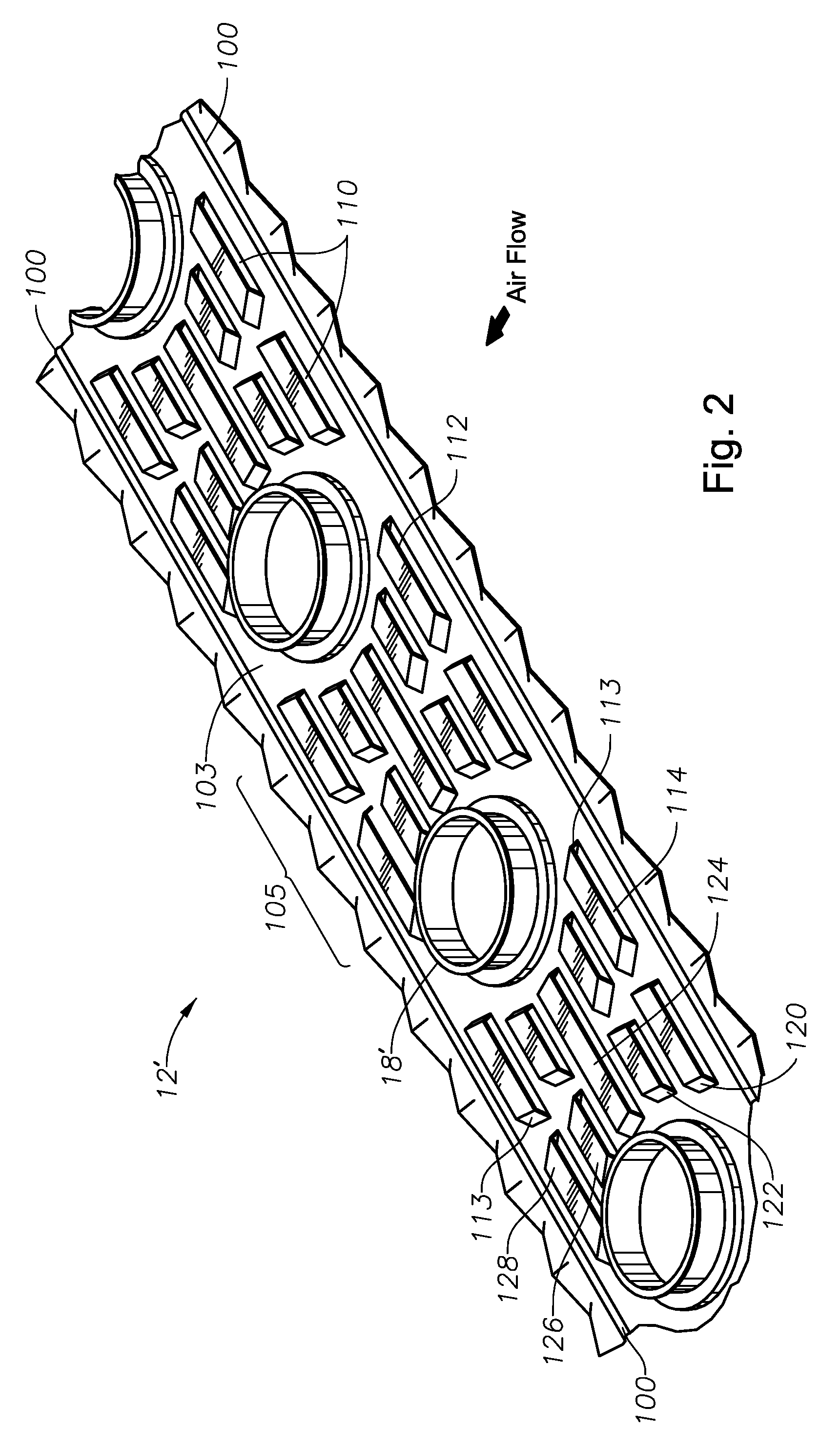Method for Manufacturing Tube and Fin Heat Exchanger with Reduced Tube Diameter and Optimized Fin Produced Thereby
a technology of heat exchanger and tube, which is applied in the direction tubular elements, stationary conduit assemblies, etc., can solve the problems of limited commercial success of small diameter coils, prohibit commercially viable manufacturing of any but the shortest heat exchangers, and difficult lacing process, so as to increase the stiffness and rigidity of heat exchanger fins, increase the tendency to maintain proper alignment, and increase the effect of fin stiffness
- Summary
- Abstract
- Description
- Claims
- Application Information
AI Technical Summary
Benefits of technology
Problems solved by technology
Method used
Image
Examples
Embodiment Construction
[0030]FIGS. 2-12 illustrate a fin 12′ dimensioned for small tubing, e.g. 5 mm outer diameter or less, optimized for use with a condenser or evaporator of a conventional air conditioner. FIGS. 2 and 3 illustrate a heat exchanger fin 12′ according to a first embodiment of the invention that is characterized by a single longitudinal row of collared holes 18′ for use in a single-row coil assembly. FIGS. 4-8 illustrate a heat exchanger fin 12′ according to a second embodiment of the invention that contains two longitudinal rows of collared holes 18′ for use in a double-row coil assembly. However, fins 12′ may be arranged for three, four, five, and six or more rows of coils according to the invention. The leading and trailing edges of fin 12′ preferably have corrugated edges.
[0031]Referring primarily to FIGS. 2-6, according to the preferred embodiment of the invention, a 5 mm or smaller tube and fin heat exchanger manufacturing process includes a novel and unobvious processing step in for...
PUM
 Login to View More
Login to View More Abstract
Description
Claims
Application Information
 Login to View More
Login to View More - R&D
- Intellectual Property
- Life Sciences
- Materials
- Tech Scout
- Unparalleled Data Quality
- Higher Quality Content
- 60% Fewer Hallucinations
Browse by: Latest US Patents, China's latest patents, Technical Efficacy Thesaurus, Application Domain, Technology Topic, Popular Technical Reports.
© 2025 PatSnap. All rights reserved.Legal|Privacy policy|Modern Slavery Act Transparency Statement|Sitemap|About US| Contact US: help@patsnap.com



